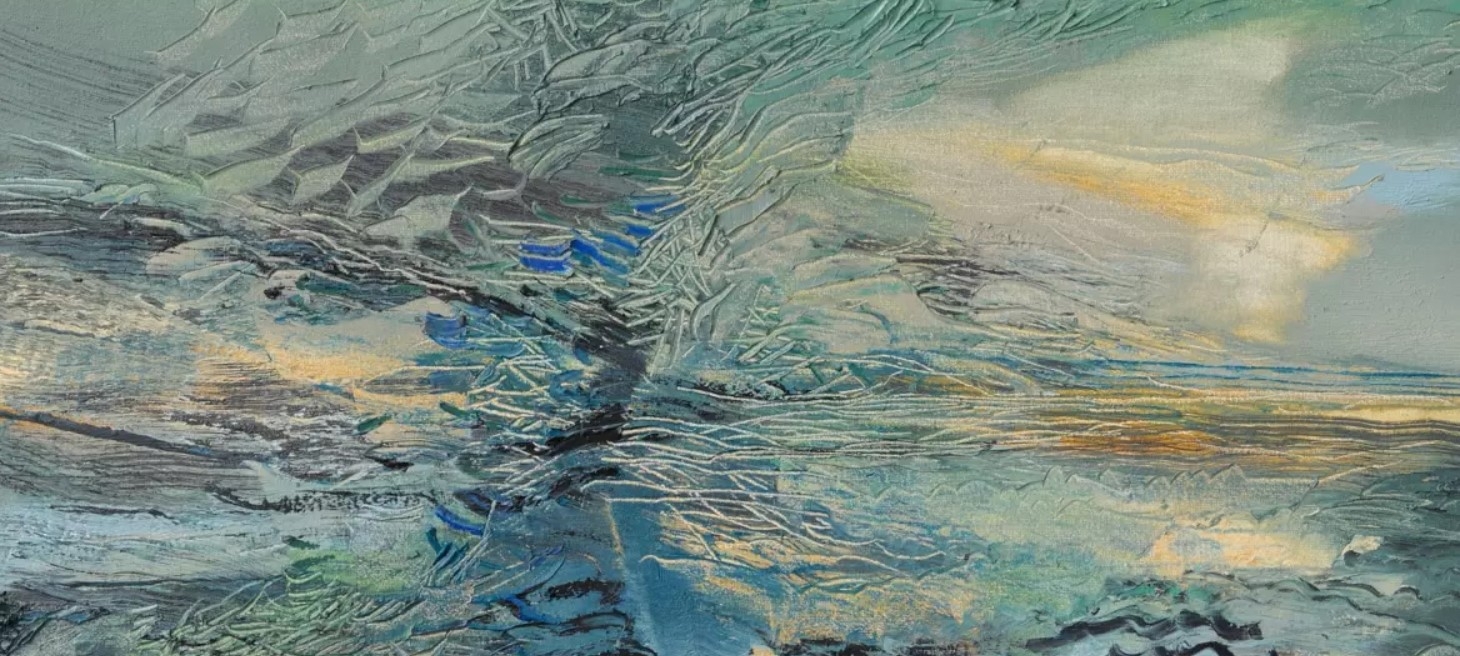Inta Celmiņa explores the possibilities of depicting the impression of sound on canvas in both music-related themes and landscape motifs, painting musicians and discussing with them the social tasks and compositional interconnections of classical music and visual art.
The artist’s compositions of the 1970s are based on the contrasts of areas, highlighting gray-white accents on a dark background, but gradually her manner approaches the impetuous rhythms of music. Along with the expression of brush strokes in the 1990s, painting gained greater forms and strong expression of coloured areas. Inta Celmiņa’s intentions follow from the quote: “To say the unsayable. There are impressions from nature, sketches with formal explorations and attempts to divide the subject into constituent parts to finally show it as a whole.”
About the artist
Inta Celmiņa was born in 1946 in Riga. Studied at Janis Rozentāls Riga Secondary School of Art (1957–1964), the Art Academy of Latvia’s (AAL) Faculty of Pedagogy (1964–1969), earning a master’s degree in art (2001). She has participated in exhibitions since 1969. Inta Celmiņa is a member of the Artists’ Union of Latvia since 1976. Worked as an art teacher at Riga Secondary School of Applied Art (1969–1976), as a senior lecturer at the AAL Faculty of Pedagogy (1969–1970, 1976–1988). Lecturer at the International College of Practical Psychology (2003–2007), from 2006 – associate professor.
In 2020, Inta Celmiņa was awarded a lifetime grant from the State Culture Capital Foundation of Latvia, in 2011 – the Order of the Three Stars, which is the highest state decoration in Latvia. Her works are held by the Latvian National Museum of Art, Daugavpils Mark Rothko Art Centre, Tukums Museum, Madona Museum of Regional Studies and Art, Janis Rozentāls Saldus Museum of History and Art, Zuzeum, collections of the Artists’ Union of Latvia, the State Tretyakov Gallery in Moscow, the Lithuanian National Museum of Art in Vilnius, the Museum Ludwig and the Jeane Freifrau von Oppenheim collection in Cologne, as well as private collections in Latvia and abroad.
Text by Dace Lamberga





